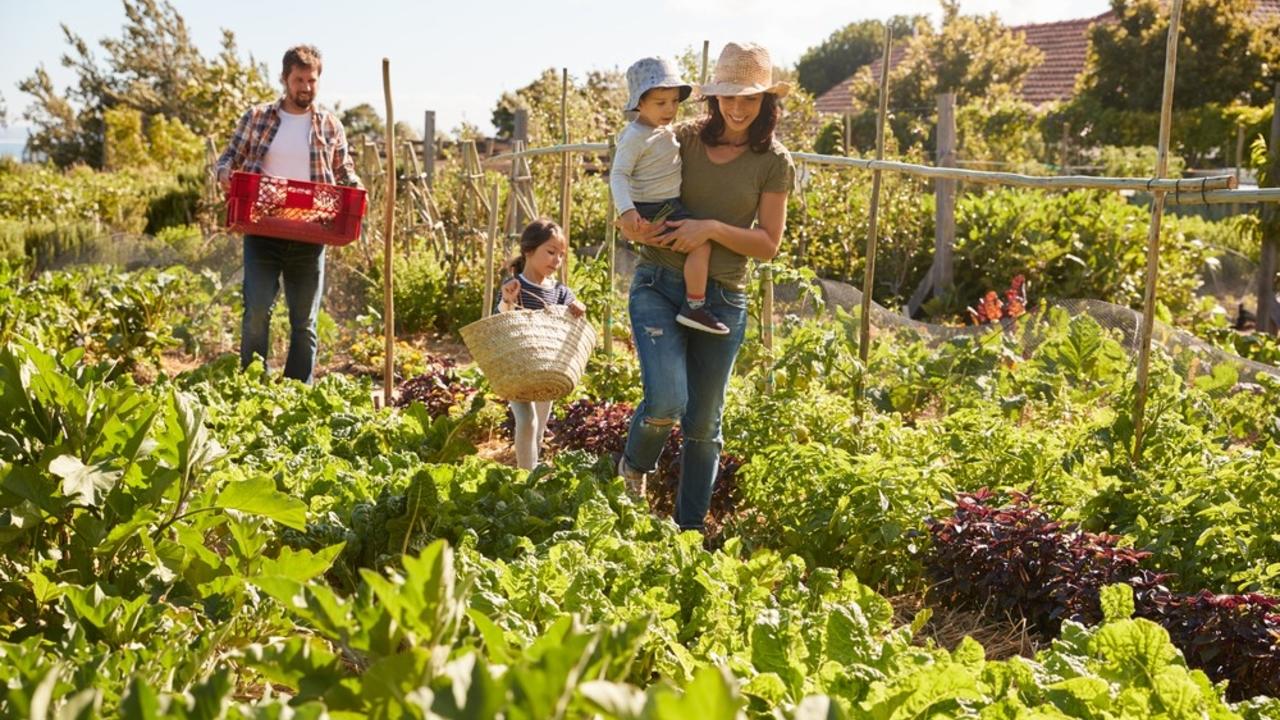Sustainable wellbeing and green living
Let's find ways to Flourish!
Green Roofs

Green roofs have been increasing in popularity for both commercial and residential buildings due to their aesthetic and environmental benefits. Green roofs are partially or completely covered in vegetation. This vegetation becomes the top layer of a green roof with layers below that include a growing medium such as soil, a layer of root barrier, filter fabric to prevent the loss of soil, a drainage system, and structural supports for the roof itself. Green roofs can either be “Intensive” or “Extensive”. Extensive roofs feature low maintenance and lightweight vegetation such as sedum and grasses. Intensive roofs, which require more structural support, are able to feature larger vegetation such as trees and shrubs due to their greater soil depths.
Regardless of whether a green roof is extensive or intensive, there are many environmental benefits associated with the implementation of green roofs in urban areas. Green roofs provide cities with the ability to introduce green spaces into d...
Urban Beekeeping

Over the past few years people have become more aware of the important role bees play within most ecosystems. This increase in awareness has resulted from the global decline of bee populations. Declining bee populations have serious environmental impacts such as the loss of biodiversity and decreased food production. Bees are essential for pollination, and are responsible for pollination of much of the world’s food crops. The size and quality of crop yields are jeopardized by the decrease in bee populations. In addition to pollinating agricultural crops, bees help maintain biodiversity by pollinating wild plants which serve as habitats and food for many wild species.
Urban beekeeping, the process of keeping honey bee colonies in urban areas, is a great way to help protect bee populations while partaking in a fulfilling hobby and producing delicious honey! Cities are great locations for beehives due to their protection from wind and pesticides, and the diversity of flowering plants. Ev...
Yoga for All

Yoga is a mind-body practice that has been around for thousands of years and continues to be a popular method of exercise and wellness today. And good news, it is not just for the fit and flexible. There is a yoga practice for every body type and ability. Some physical benefits of practicing yoga include increased flexibility, increased muscle tone and strength, lowered blood pressure, better posture, and improved balance. These physical benefits are accompanied by many mental benefits as well. Yoga practices often incorporate meditation and breathing exercises in order to reduce stress, increase awareness of your body and movements, aid in sleep, and increase mental clarity. There are hundreds of types of yoga practices, meaning that there is a yoga practice out there for everyone no matter your age, size, health concerns, range of mobility, or experience level.
One of the most commonly practiced types of yoga focuses on breathing exercises and physical movement. Postures such as mou...
Community Gardens

Community gardens ensure that gardening is accessible to everyone. Barriers such as limited space, agricultural knowledge, or gardening tools can prevent individuals from growing their own fruits and vegetables and obtaining the many health and mental benefits associated with gardening. Community gardens are shared plots of land that have either been further divided into separate plots and rented out by individuals or are communally owned in terms of maintenance and food production.
One of the many benefits of community gardens is the ability to transform underutilized and abandoned areas of a city into productive green spaces. Vacant lots that receive adequate sunlight and have access to a water source are perfect spots for community gardens to be established. The appearance of surrounding areas, whether they are residential or mixed-use, can be significantly increased by the presence of a well-maintained garden. Additionally, community gardens encourage people to gather outdoors, ef...
Conscious Kindness Day

May 15th is Conscious Kindness Day, a day dedicated to spreading love through intentional acts of kindness. Conscious Kindness Day was first created in Winnipeg, Manitoba by the Winnipeg branch of United Way. The United Way is a Canadian non-profit organization that serves thousands of communities throughout the nation. The local and national goal of the United Way is to create opportunities to improve lives and communities. This includes addressing issues of poverty, providing support for children, and creating connected and vibrant communities. Conscious Kindness day has been celebrated annually since 2015. Although the celebration initially started in Winnipeg, other cities have begun celebrating the day as well.
In previous years, local efforts to spread kindness have included installing pop-up stations at major Winnipeg intersections and handing out treats and coffee to people passing by. Kindness can also be expressed on a smaller scale with person to person interactions. The pu...
Indigenous Dance Troupes

Dancing is an art that is full of emotion, culture, and history. Dance has, and continues to, play a large role in the human experience, as archeological evidence has identified that dance was occurring thousands of years ago and its importance and prevalence persists today. Different types of dance can be found across many cultures and are often incorporated into social functions, major events, storytelling, religions, and spirituality. Theatrical or performance dance offers participants a way to express themselves, a chance to perform, and a medium to tell a story. This connection between culture and entertainment is prevalent in Indigenous dance troupes.
Indigenous dance troupes also provide a meaningful way for Indigenous children and people of all ages to connect with their heritage and cultural practices. Seeing young children proudly perform their traditional cultural dances gives hope that children can grow up knowing and embracing their culture. Contemporary Indigenous dance ...
Rooftop Gardens

Gardening is a great pastime that benefits your mental and physical health, and allows you to create an aesthetically pleasing environment and harvest different fruits and vegetables. That being said, not everyone has access to a yard or garden. Living in an apartment building may mean that traditional forms of gardening are not an option for you. However, rooftop gardens are a great alternative for those who have limited space. The easiest approach to rooftop gardening is the use of containers and planters. This method is affordable and practical, as the containers can be easily moved around to suit your needs and preferences. Alternatives to container gardening include installing a permanent green roof. Green roofs have soil and plants built directly into the roof structure and require professional design and installment. Make sure to check with your landlord before implementing a rooftop garden as there may be certain regulations you must adhere to.
Some considerations you might wa...
Flourishing Things: Communities Banning Single-Use Plastics

Plastics are durable and inexpensive which means that they are used frequently in packaging, furniture, clothing, electronics, utensils and more. While plastic is used for a wide variety of purposes, it is associated with significant disposal and environmental issues, as many plastics cannot be recycled and reused. Instead, they are thrown out and sent to landfills. Due to its long-lasting nature, plastic takes hundreds of years to break down in the environment. When plastic does eventually break down through weathering and sun exposure, it turns into microplastics which are very small pieces of plastic (generally less than 5 mm in length). While larger plastics pollute the environment in obvious ways, microplastics are so small that they get ingested by wildlife and accumulate through the food chain. Single-use plastics are especially harmful due to their short lifespan and lasting environmental impact.
Single-use plastics are items that are meant to be used once and then disposed of...
Flourishing Things: Keeping Whales Wild

Whales are magnificent creatures that are highly intelligent and social. Their graceful movements, as well as their playful interactions with each other, are mesmerising to watch. It is not surprising that humans have the desire to get a closer look at these beautiful sea creatures. Beginning in the 1960s, Orca whales have become main attractions at many aquariums and amusement parks. Their playfulness and trainability have made them prime candidates for amusement park performances. The captivity of whales, however, is a cruel practice that significantly degrades their health and wellbeing. There are many reasons why whales should be kept wild.
Enclosures for captive whales are far from adequate when it comes to size. Orca whales, which are most commonly held in captivity, range from 16 to 23 feet in size. As one might imagine, such large animals require a large habitat. Any aquarium or enclosure, no matter how big, isn’t able to compare with the vastness of the ocean where whales are...
Flourishing Things: Public Meditation Spaces

Taking time to meditate is a great way to recharge and centre yourself throughout the day. Some of the many benefits associated with meditation include reduced stress, improved focus, re-energization, improved sleep, and increased attention span. You don’t need to be at home or have a large block of time in order to meditate. Meditation can be done on the go whenever you have a few minutes to spare. Public meditation spaces offer individuals a quiet and peaceful place to reflect without having to relocate to a completely private location.
One solution to meditating in public spaces is making use of mindfulness or meditation pods. These are structures which are designed to allow individuals to escape from the business of everyday life. The creators of Headspace, a popular meditation app, worked with architects at Oyler Wu Collaborative to create a meditation pod which combines natural materials such as wood and screens that allow users to access Headspace guided meditations. These pods...

